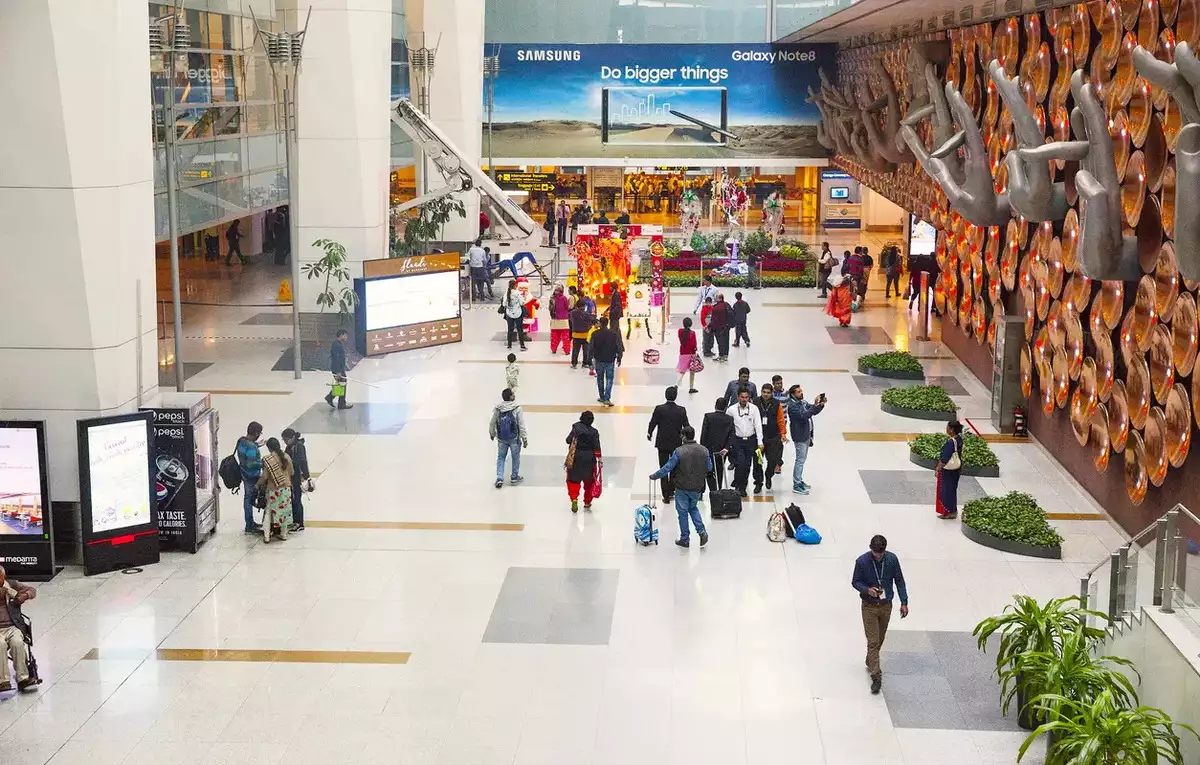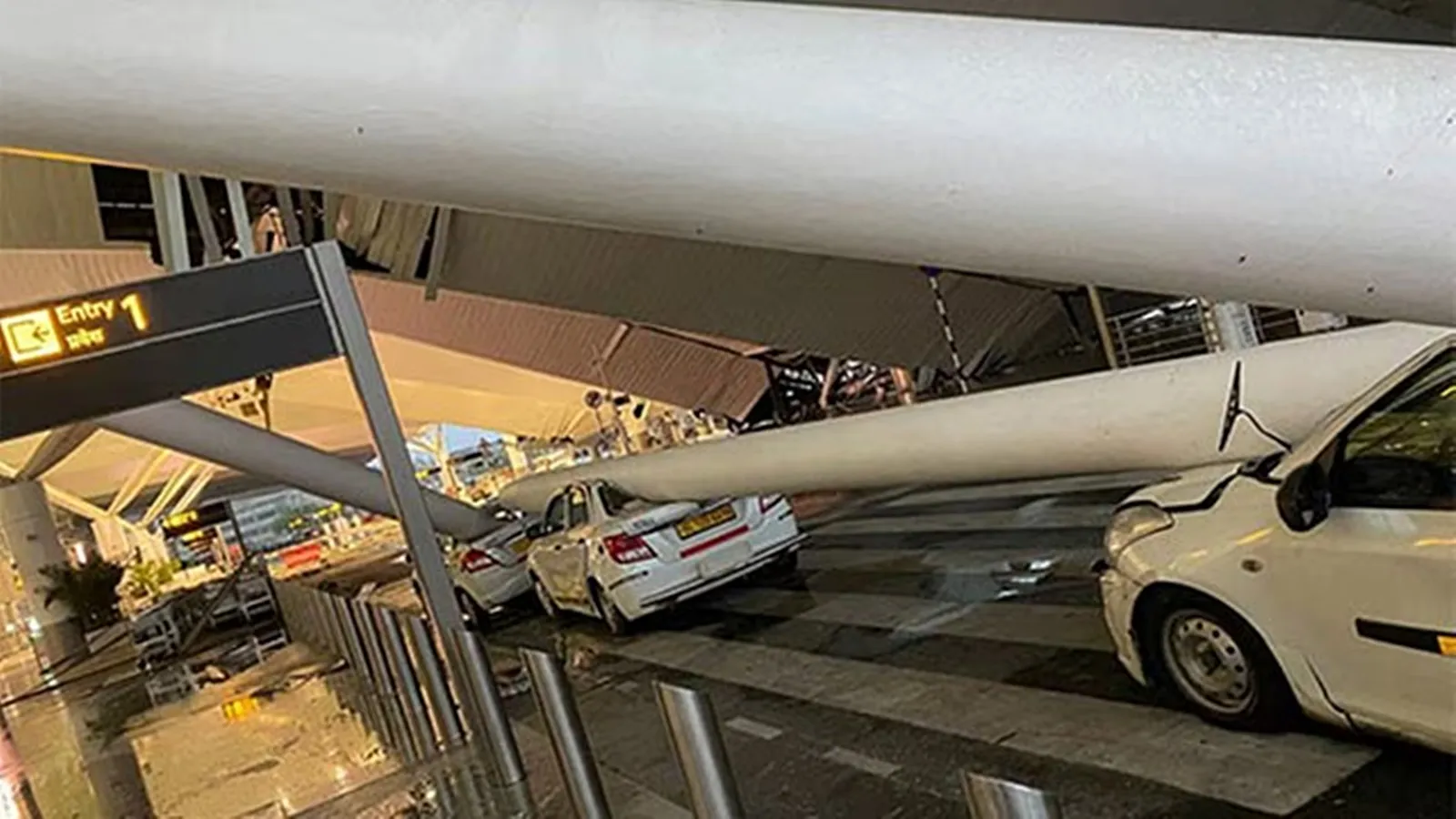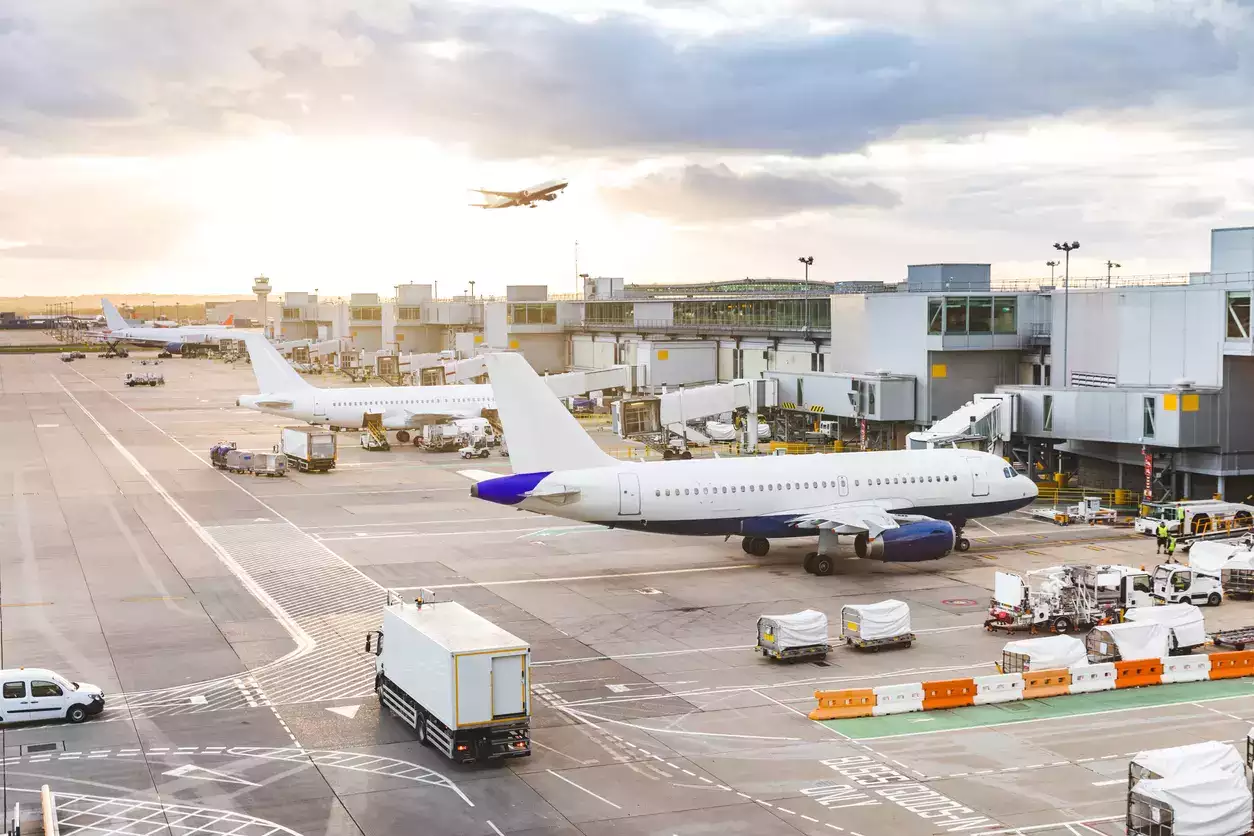400 Airports by 2047. Can India Handle the Pressure After Decades of Infrastructure Collapses?
India's civil aviation will soon witness massive development through an extensive plan for infrastructure readiness and strategy, which is to be prepared by 2047. Towards this end, the Ministry of Civil Aviation plans to have a minimum of 350 to 400 functional airports across the country by 2047 from 157 airports in the fiscal year 2024.

A landmark ambition towards making India a future aviation superpower, India’s aviation sector has not only seen phenomenal growth in recent times but also stands at the threshold of yet another golden era of infrastructural development. India intends to add more functional airports, which stand at 157 in 2024 to about 350-400 by 2047. It is a pretty ambitious goal with the vision of enhancing regional connectivity, creating economic development, and ensuring India’s position as one of the largest aviation markets worldwide. But with many challenges and still huge pitfalls, India is taking this journey.
Aviation Industry in India’s Current Scenario
Indeed, the last ten years were remarkable for India’s air sector. India stood as one of the third-largest aviation in-house markets in the world. The number of functional airports has more than doubled from what existed in 2014 at 74 airports and stands at 157 airports in 2024.
Coupled with the increase in the number of passengers travelling through domestic air, Indian airports can now handle as many as 376 million passengers in 2024. Drivers for the growth in this sector are:
A rise in the expansion of the airline fleet.
- Increasing middle-class disposable incomes.
- Policies from the government that promote connectivity in regional aspects.
Growth Statistics (2014-2024)
- Operational Airports- Increase to 157 operational airports in 2024 from 74 in 2014.
- Domestic Air Passengers- 376 million, some proof that the demand for air travel has become huge.
- Airline Fleet Increase- Indian airlines have expanded significantly to cater to the demand.
This growth in demand for air travel is likely to continue with the development of the Indian economy, the multiplication of the middle-class population, and the improvement of infrastructure.
However, the question remains- Will India sustain such a high target by building 350-400 airports by 2047?
The development of Indian airports will likely bring multifold benefits in many areas of the economy. Some of the main areas where growth in airport infrastructure can make a difference are as follows.
Economic Growth and Contribution to GDP
The aviation sector constitutes around 5% of India’s GDP, generating millions of direct and indirect jobs. Increased presence will play a critical role in increasing this share in tourism, trade, and investment participation. Airport infrastructure will likely transform small cities into a hub of economic activity by better opening access to domestic and international markets.
Regional Connectivity and Inclusivity
Most of the enhanced airport infrastructure under the government’s Regional Connectivity Scheme UDAN, RCS will bring air travel opportunities to India’s unserved and underserved regions. Available air travel with the commoner is to be connected to metro cities from Tier II and Tier III towns, upgrade connectivity, and usher in development into areas that have been untouched so far.
Under the scheme, over 2.8 lakh flights have been operated, and by 2024, more than 1.43 crore passengers have been benefitting. The operation will increase regional connectivity job opportunities and improve services offered to the residents.
Many places will witness a large scale of employment while constructing an airport infrastructure. Jobs will not be limited to aviation but also in other sectors like tourism, logistics, and retail. Furthermore, numerous working airports will demand skilled personnel from the aviation industry, including pilots, air traffic controllers, ground staff, and engineers.
Airport expansion can be highly advantageous but presents considerable environmental and social challenges. New developments often in airports pose a significant environmental costs, like clear-cut deforestation, wetland destruction, and higher carbon emissions. As an international climate agreement party, India must balance its infrastructural ambitions with its ecological commitments.
The large-scale areas needed to construct airports affect large communities, usually in rural or tribal zones. Compensation and rehabilitation of such people will significantly ward off social unrest and project delays.
Challenges in Airport Infrastructure Expansion
The target of having 350-400 functional airports by 2047 is highly ambitious and, for sure, accompanied by many potential restraints, financial insecurities, or environmental impacts. All these issues need to be overcome if India is to address its aspirations in this regard successfully.
The greatest threat to expanding airports in India is the commercial viability of new routes and airports. Most routes launched under the UDAN scheme have witnessed low demand and have thus been suspended. As many as 225 out of 479 routes launched under the scheme have shut down due to insufficient demand.
Airlines operate in most remote or underserved areas of the country at a higher cost operationally and in lower revenue opportunities than services operated in other parts. Therefore, these routes are less viable for the airlines. Given the government’s subsidy and incentives accorded under the UDAN scheme, some relief comes to the fore; however, the long-term sustenance of such routes is yet to be seen.
Most of the existing airports in India are already overstretched and have inadequate infrastructure to support the ever-growing number of passengers. Several airports lack the essential facilities to provide safe and efficient aviation operations. For example, several airports do not have night landing facilities and cannot operate beyond limited hours, limiting their overall efficiency.

Substantial upgrades in existing airports would increase government plans’ financial and logistical burden. With the passenger volumes growing daily and airports not modernized and equipped according to international standards, India is in danger of facing issues concerning safety and efficiency.
Building and maintaining airport infrastructure will demand a lot of financial investment. The government has allocated portions of its budget for new airport construction and the upgrade of already operational airports; the sector still requires private capital investment. PPPs will represent one of the methodologies used most in developing airport infrastructure, but the commercially viable areas are currently too low to attract private investors.
In addition, operating airliners is prohibitive, especially on routes with low demand. Although the capping by UDAN on tickets on some routes made traveling by air relatively cheaper, this works negatively for the airliners as their revenues are reduced. Hence, the sustainability of such routes makes them hard to sustain for a long time.
Environmental and Land Acquisition Issues
Most of the expansions in the airport usually lead to the degradation of the environment.
For instance, the devastation of mangroves and wetlands has been a critical consequence of constructing Navi Mumbai International Airport because the destruction of these sources necessitated protecting the coastline and the area’s biodiversity. Such a project would also emit higher carbon emissions at the construction stage and through flights that follow.
Although environmental impact is a severe issue of consideration, land acquisition for establishing airports displaces local populations and brings about social upheaval. The Navi Mumbai airport proposal case was marred by repeated delays when locals protested that they would not sell their land without adequate compensation. The sustainability of India’s expansion plans will largely depend on whether the new airports are developed responsibly, socially, and environmentally.
Lessons Learnt from Previous Failure Cases in Infrastructure
India has a patchy past concerning airport infrastructure, where, at more than one point, high-profile incidents have raised questions over construction quality, maintenance, or safety standards. All these issues are to be sorted out if India is to make any real strides in aviation.
Case in Point: Roof Collapse at Kolkata Airport in 2013
In the newly refurbished Netaji Subhas Chandra Bose International Airport of Kolkata, a portion of the roof collapsed in 2013, killing one and injuring several others. It was attributed to poor construction practices and a lack of proper maintenance protocols. Investigations noted that substandard materials had been used during its construction, and even lesser quality control occurred while constructing the airport.
This incident at Kolkata airport needs to be taken as a lesson for future airport projects. For a country like India, which is in the pipeline of undertaking this challenging development plan, adherence to building standards and proper maintenance would be crucial to avoiding such disasters.
Fire Safety Issues
India airports have had to face another recurring issue: fire safety. For instance 2019, there was a fire breakout at Mumbai’s Chhatrapati Shivaji Maharaj International Airport, causing major operation disruptions and apprehensions regarding adequate fire safety arrangements. The frequent fires at Indian airports result from faulty wiring, poor maintenance, and insufficient emergency preparedness plans.
Fire safety standards and increasing exposure among airport staff to handle emergencies will play a decisive role as India’s aviation infrastructure rapidly grows.
Modern fire safety systems and appropriate emergency response plans will be necessary, with passenger traffic expected to increase. Ensuring that passengers’ safety continues unabated will be arduous without them.
2007 Collapse of Terminal 1 at Delhi Airport
A portion of Terminal 1 of Indira Gandhi International Airport in New Delhi collapsed in 2007 death figures. Still, it was ascertained that the main reasons behind this debacle were poor maintenance and defective material during construction. The collapse invited severe questions about the structural soundness of India’s airports and the quality of the material used in constructing them.
Airport Roof Collapse In 2024

On 28th June 2024, 45-year-old Ramesh Kumar went to Delhi Airport to drop off his customer. He worked overtime to earn more money for his elder daughter’s wedding. As soon as he dropped his customer, the roof of Delhi Airport’s Terminal 1 fell on his car, and he died.
On 27th June 2024, the roof of Jabalpur’s recently inaugurated airport collapsed. As India continues to push further expansion on its airport network, the lessons learned from past failures must be emulated for new airports to ensure safety and longevity.
Government Initiatives on Quality and Safety
As the Indian government is moving forward with plans to expand the airport network, it has been bringing in several initiatives addressing safety, quality infrastructure, and sustainability issues.
National Civil Aviation Policy (NCAP) 2016
The National Civil Aviation Policy was launched in 2016 to make the aviation sector more efficient, competitive, and safe. Procedural simplification issues are crucial in regulating procedures; regional connectivity is being promoted while safety and infrastructure standards are to be improved in every nook and corner of the country.
A third characteristic of NCAP is the high value placed on airport development, where PPPs are actively encouraged. With private players investing in and running airports, the expectation is that there will be higher efficiency in the operation of airports and that Indian aviation will attract the best international practices. However, the challenge is ensuring that private operators also maintain safety and quality.
Safety Oversight
Besides the NCAP, the Directorate General of Civil Aviation has oversight responsibility for safety standards at all airports in India. The DGCA regularly inspects airports on safety and maintenance standards. However, it has been criticized for staff shortages and a general lack of resources, making it hard to inspect and enforce at airports.
Strengthening the capabilities of the DGCA will require the addition of more inspectors and additional funds in order to further enhance safety oversight. Enhancing the DGCA’s ability to address safety standards will be crucial for preventing such accidents where the expanding airport network operates safely in India.
India has also promulgated stringent regulations on environmental concerns over the construction and operation of airports. The Ministry of Environment, Forest, and Climate Change has issued a policy requiring new projects involving airports to prepare detailed EIAs before approval. It necessitates the appraisal of the potential impacts the environment may undergo due to the project and suggests mitigation measures to prevent damage.
While these regulations are steps in the right direction, their implementation leaves much to be desired. Vigorous enforcement of environmental laws and ensuring that airport developers take up sustainable practices will prove key to minimizing the impacts of India’s airport expansion plans.
Future Outlook- How to Reach 400 Airports by 2047?

The ambitious objective of having between 350 and 400 functional airports by 2047 would, however, be essential to sustainable economic growth and development in the country. However, the objective would be met only when all the challenges above about infrastructural quality, environmental sustainability, commercial viability, and safety standards have been addressed.
The Indian economy is also expected to grow at around 6.5% to 7% in the next decade, increasing disposable incomes and demand for air travel. More Indians entering the middle class will increase this demand for cheap and efficient air travel. This demand hike will strain the existing airports, where new infrastructure has to be developed.
In response, Indian airlines are already expanding their fleets. For example, Air India placed a record order for 470 aircraft in 2023. That statement in the industry speaks to the relative confidence about future growth. However, airport infrastructure development needs to keep pace with the increased number of flights and passengers.
Public-Private Partnerships (PPPs)
The success of the government plans for India’s airport expansions will depend mainly on their ability to secure private investment through PPPs. In the last few years, private companies have been critical contributors to the development and operation of major airports located in Delhi and Mumbai, among others. These partnerships ushered in much-needed investment into this sector, efficiency in operations, and international best practices.
However, this will face the challenge of attracting private investment to less commercially viable regions. The government may need to facilitate private companies to invest in remote and underdeveloped areas through more favourable terms such as tax incentives or guaranteed returns on investment.
The question for India now is ensuring that this increased airport infrastructure is sustainable and does not harm the environment as it grows. The aviation sector contributes the highest percentage to carbon emissions in the world at present, and the ever-increasing aviation sector may be one of the critical exacerbating factors contributing to carbon emissions if not handled sustainably.
The cost of green technologies like electric and hybrid aircraft, sustainable aviation fuel (SAF), and carbon-neutral airport designs will become the bare minimum requirement to reduce the adverse effects of airport expansion on the environment. And examples of this are already sprouting throughout Indian airports, such as Cochin International Airport, by moving to solar power and other renewable sources.
The Path to 2047
The ambitious aim of 400 operational airports before 2047 in India still faces a challenge in solving problems such as quality infrastructure, commercial viability, environmental sustainability, and safety.
But if this can be done, expanding India’s airport network would positively boost the economy, regional connectivity, and employment. Also, India would emerge as the world leader in aviation, competing with some of the global giant aviation markets.
Embracing innovation, building public-private partnerships, and raising environmental and social concerns will allow India to make a world-class aviation sector that is as inclusive and sustainable as it is future-oriented. If there is success in these regards, the mooted target of 400 operational airports by 2047 would no longer be an elusive dream but would herald a game-changer for the aviation sector of this country.




